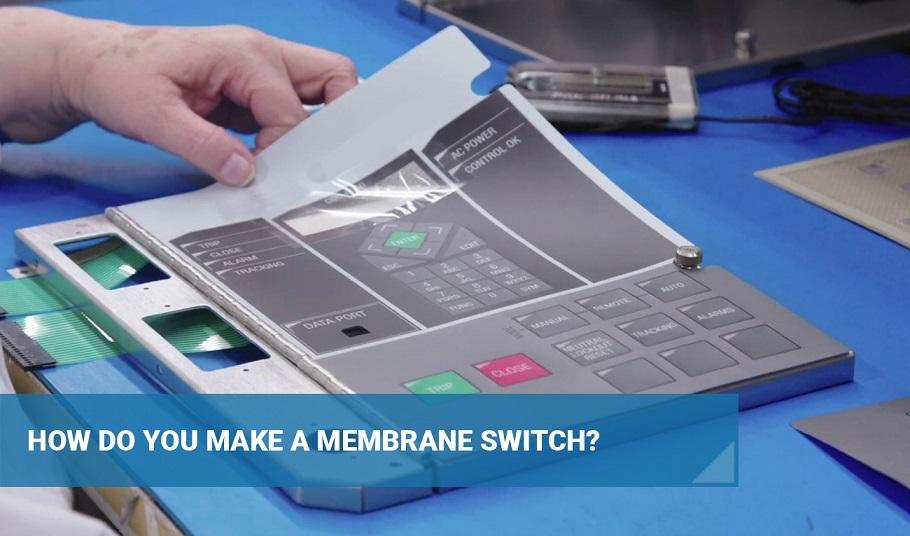Why Choosing the Right Membrane Switch Is Crucial for Your Item Design
Why Choosing the Right Membrane Switch Is Crucial for Your Item Design
Blog Article
Comprehending the Capability of Membrane Switches Over for Individual Interface Devices
The functionality of membrane switches over stands for a substantial advancement in individual interface style, combining effectiveness with visual convenience. As markets significantly prioritize individual experience, recognizing the nuances of membrane button technology ends up being crucial.
What Are Membrane Layer Switches?
Membrane layer buttons are cutting-edge user interface devices that help with individual interaction with electronic devices. These flexible parts include several layers, including a visuals overlay, spacer, and a published circuit layer. The style allows for a seamless assimilation right into numerous digital tools, boosting both the visual and useful facets of customer interfaces.
Membrane layer buttons are frequently employed in a variety of applications, from home appliances to industrial machinery and medical tools. Their construction usually features a thin account, making them an excellent selection for portable styles. The responsive comments offered by these buttons can be crafted to meet specific customer preferences, ensuring effective communication in between the individual and the device.
Resilience is an additional substantial benefit of membrane layer switches, as they are resistant to dirt, dampness, and chemicals, which improves their life expectancy in requiring atmospheres. Furthermore, these switches can be personalized in terms of shape, dimension, and graphic layout, permitting branding and user-specific features. On the whole, membrane switches stand for a functional service for boosting individual experience in electronic gadgets, combining capability with visual appeal in an effective fashion.
Exactly How Membrane Layer Changes Job
Operating on a simple principle, membrane layer switches use a split building to sign up user input efficiently. Each switch contains multiple layers, including a published circuit layer, a spacer layer, and a top visuals layer, which are created to collaborate seamlessly. When an individual presses the leading layer, it compresses the spacer layer, bringing the conductive aspects of the circuit layer right into contact with each other.
This call creates a closed circuit, signifying the device to execute a particular feature. The design enables numerous arrangements, including tactile comments, which can enhance the individual experience by supplying a physical experience upon activation. The materials utilized in membrane layer buttons frequently consist of flexible substrates, such as polyester or polycarbonate, which ensure durability and durability versus wear and tear.

Secret Benefits of Membrane Switches

Another substantial advantage is their compactness. Membrane switches are slim and lightweight, which enables suppliers to save space in their gadgets without sacrificing capability. This function is particularly valuable in applications where weight and volume are crucial factors to consider.
Furthermore, membrane layer switches are immune to dust, dampness, and chemicals, enhancing their durability. This durability extends their life expectancy and reduces the requirement for frequent replacements, leading to expense financial savings in time.
Moreover, the responsive comments provided by membrane layer buttons can be optimized to boost user interaction. They can consist of features such as raised buttons or distinct clicks, improving use and individual experience.
Applications Throughout Industries
Individual user interface devices using membrane layer switches prevail in a vast array of sectors, showcasing their adaptability and performance. Membrane Switch. In the clinical sector, membrane switches are indispensable to devices such as diagnostic tools and individual surveillance systems, where their longevity and ease of cleaning are vital for keeping health criteria. In the auto sector, these buttons are employed in control panel controls and infotainment systems, supplying a sleek and modern interface for users.
Furthermore, the consumer electronics market advantages from membrane layer buttons in home appliances and handheld gadgets, where small design and easy to use user interfaces boost customer experience. Industrial applications additionally utilize membrane layer changes for control panels in machinery and automation systems, emphasizing their robustness and resistance to harsh environments.
In the aerospace and protection sectors, membrane layer switches are utilized in cockpit controls discover this and equipment, where reliability and efficiency under severe conditions are critical. Additionally, the pc gaming market significantly includes membrane switches in controllers and gallery makers, adding to an engaging user experience. Overall, the versatility of membrane layer changes enables their widespread usage across countless markets, underscoring their importance in modern customer interface style.
Future Trends in Membrane Layer Switch Modern Technology

Furthermore, the usage of advanced materials, such as polycarbonate and polyester films, is anticipated to climb, offering enhanced sturdiness and resistance to ecological stress factors. These products add to the general longevity of membrane buttons, making them ideal for harsher commercial applications.
Furthermore, the unification of clever technology, consisting of IoT connection, will certainly enable membrane switches to communicate with other gadgets and systems, promoting an extra interactive customer experience. This fad aligns with the growing demand for smart devices across various sectors, from health care to consumer electronic devices.
Finally, personalization choices are expected to broaden, enabling producers to create Bonuses bespoke options tailored to particular individual needs and preferences. These developments will certainly place membrane layer buttons as crucial parts in the advancement of interface innovation.
Final Thought
In conclusion, membrane switches represent a crucial development in customer interface innovation, offering a helpful resources reputable and versatile solution for diverse digital applications. As innovations in material scientific research and touch sensing modern technologies continue, the performance and applicability of membrane switches are anticipated to increase, reinforcing their relevance in modern electronic gadgets.
Report this page